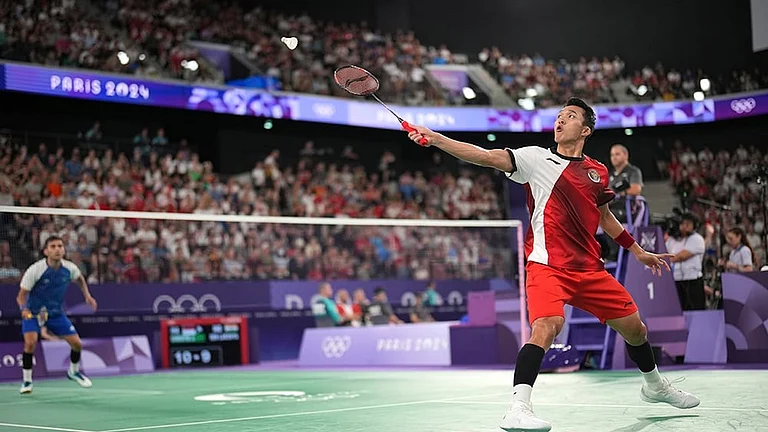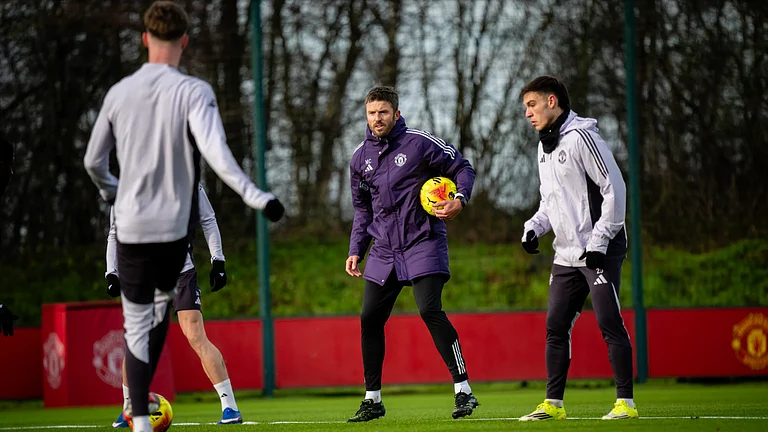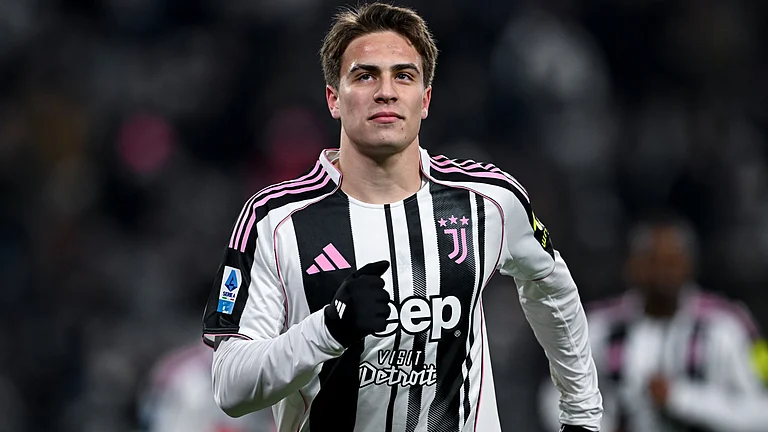“Laughter promotes a bond and simultaneously draws a line”
—Konrad Lorenz, On Aggression
***
If someone were to say that humour and comedy form an integral part of Malayali life, politics and culture, you may be prompted to ask, ‘So what’s unique about that?’. Although a valid question, it would miss the sheer extent and nature of it that’s obvious to those who know it and can compare. Last week, comedian Indrans won the state’s best actor award. In 2010, Salim Kumar, another comedian, got the national award for best actor. That both of them won it, paradoxically, for tragic roles is not the only reason one can say that humour is serious business in Kerala.
Laughter, hilarious and liberating, oftentimes cynical and dark, invariably emerges in all discourses and interactions—they come in umpteen forms: as parodies, double entendres, mimicry, cartooning, spoofing…. Kerala’s folk and classical arts, and visual, literary and oral traditions, are strewn with shining figures of humour. Traditional performance forms like Padayani, Mudiyettu, Chavittunatakam, Porattu natakam and Kurathiyattam have comedy and comic characters at the centre, as is the case with ‘classical’ elite-caste temple arts like Koothu and Ottanthullal. The Sanskrit theatre Koodiyattam has the mercurial vidushaka, who accompanies the hero in all his journeys and adventures. While on stage, the Chakyars, as vidushaka, had the artistic licence to make fun of even the kings, nobles and priests. Malayalam literature has produced some of the most versatile and acerbic of satirists—Kunchan Nambiar, Sanjayan, Vaikom Muhammed Basheer, E.V. Krishna Pillai and VKN. No wonder the most acclaimed Indian cartoonists like Sankar, Kutty, Abu Abraham, O.V. Vijayan and E.P. Unny are Malayalis. In Malayalam television, the most popular programme is the daily capsule of political-cartooning that spoof and pillory politicians through a montage of film clips, music and news footage, peppered with cryptic comments of the presenter (virtually a contemporary avatar of the Chakyar of yore). Malayalam cinema is no exception. Comedians like Adoor Bhasi, Bahadoor, S.P. Pillai, Kuthiravattom Pappu, Mala Aravindan, Jagathy Sreekumar, Innocent, Sreenivasan, Philomena and Kalpana enrich its narrative universe with their varied personas. Comic styles in Malayalam cinema draw from several roots and lineages: the comic figures of ritual performances, the Tamilian buffoon, the clown of the Victorian and Marathi theatre, and the vidushaka of Sanskrit theatre.
In the ‘socials’ of 1950s and ’60s, humour doubled up as social criticism, especially in its representations of the rich, the savarnas and the landlords as degenerate vestiges of the past. In ways, comedy stood for modernity and rationalism: the practitioners of pre-modern medicine appeared as quacks, the culture of superstition was consistently made fun of. But there was also ambivalence about modernity, evident in the comic representations of the ‘modern’, and westernised men and women. You find an array of modish characters who evoke laughter: the hippie, the city-returned who flaunt chic ways, the Ladies Club members. They stood in comic relief against the accepted normalcy and norms of Malayali life and concerns, which were predominantly that of the savarna caste, urban, educated, middle-class male.

Mohanlal, Sreenivasan
Sidekick To Hero
That the often richly ambiguous device of comedy—subverting at one level and affirming at another—offered manifold uses to Kerala cinema is evident from the way it progressed. Traditional functions dominated at first. The vidushaka—companion to the dhirodatta nayaka (chivalrous hero)—was a convex mirror reflecting the hero but in a funny, perverted way. Valour, courage, pride, dexterity, intelligence and physical prowess were befitting and ‘natural’ only to the heroes. The sidekick is devoid of all these; he is a coward, a glutton, a dimwit and someone who thinks with his stomach. Till the ’70s, such vidushaka-companions to the hero were a ubiquitous presence. Actors like Bhasi, S.P. Pillai and Bahadur played it ad nauseam, creating idioms of their own, but drawing selectively from global and national cinemas while staying rooted in local performative traditions. If the hero was a police inspector, his companion was a constable (Prem Nazir and Bhasi have played this duo in many films). If the narrative is centred round the family, the sidekick was the cook, servant or butler in the house, and outside, the less intelligent classmate in college, the eternal second fiddle. One can find vestiges of this in recent decades too, with actors like Mukesh, Jagadeesh, Innocent, Jagathy and Kalabhavan Mani offering the contrast to hero-actors like Mammootty, Mohanlal, Suresh Gopi and Jayaram.
Why do these tropes endure? Because the function does. The social, physical and intellectual inferiority of the sidekick is something resonating with caste/community connotations, especially in the case of dark-skinned actors like Mani, Salim Kumar and Harishree Asokan. Sreenivasan is someone who has a very curious comic place. An accomplished actor, scriptwriter and director, his films and characters have consistently played with uneasy questions about ‘progressive’ pretensions of the Malayali middle class. (“Don’t ask caste, don’t tell caste, but never do anything forgetting your caste,” said Ayyappapanicker the poet, paraphrasing the great social reformer and saint Sri Narayana Guru). In film after film, he enacted and comically elaborated the various devious means through which a dark-skinned ‘low-caste’ man had to negotiate the invisible caste maze that Kerala society is.

(Clockwise from left) Jagathy Sreekumar, Kalpana, Philomena, Innocent, Kalabhavan Mani
By the late ’90s, the dividing lines between hero and sidekick had become thin or irrelevant. In many films, one finds the sidekick competing with the hero. For instance, Mohanlal and Sreenivasan in Sanmanassullavarkku Samadhanam, Akkare, Akkare, Akkare or Nadodikkattu, Mohanlal and Jagathy in Yoddha and Kilukkam, Mohanlal and Mukesh right from Boeing, Boeing to Kakkakuyil and Vismayathumbathu, or Mammootty and Mukesh in Chronic Bachelor. In all these films, one finds the sidekick equalling or sometimes even outsmarting the hero in his space and game.
Identity Politics?
In the ’80s, impersonation emerged as a major trope in Malayalam cinema with the central character/s impersonating someone else out of necessity, by accident or to usurp or access privilege; in a way they play characters who are not or cannot be themselves. Impersonation becomes a means of escape from oneself, a refuge or a survival strategy, and the factors that force them to don such roles are essentially economic, sometimes social. Many box-office hits of the ’90s have an impersonator for its hero or heroine posing as a husband, wife, daughter or a rich heir (Chandralekha, Meleparambile Aanveedu, Chitram, His Highness Abdulla, Kilukkam...). Maybe the inability to be what one wants and ought to be creates the vacuum within the hero-persona that is filled by impersonation. One can never be, one can only pose to be—that was the message of these comedies. Strikingly, this ‘split personality’ is something elemental to comedy also. This disjunction between being and posture, one’s real identity and potential incarnations, give rise to a situation where the hero is liberated from his moral weight and baggage, his role-liabilities. To survive, he could and will pose as anyone. This theme was experimented with in a big way by Priyadarsan in the mid-’80s (Poochakkoru Mookkutthi, Boeing Boeing) and taken to its extremes in Kakkakuyil (2001), where even the body and voice of the hero are split into the bodies of two characters, played by Mohanlal and Mukesh. In a similar vein, in the Sathyan Anthikkad film Gandhinagar II Street (1986), Mohanlal becomes a Gorkha to get a job. In Sibi Malayil’s His Highness Abdulla (1990), he is a professional killer from Bombay who gains his way into the palace to assassinate the king posing as a Brahmin. In Malappuram Haji Mahanaya Joji (1994), Mukesh impersonates a Muslim to get a schoolteacher’s job. In Doore Doore Oru Koodu Koottam (1986), Mohanlal poses as a graduate for it. The sheer number of times this self/other duality plays out, comically and with dark implications, is a revelation.

Fahad Fazil in Maheshinte Prathikaram (2016)
Laughing About Today
Recent decades witnessed a huge shift in the tone and tenor, narrative terrains and modes. With the dominance of superstars coming to an end, there was both a vacuum and a sense of lightness in the air. Many young filmmakers, actors and technicians entered the field exploring new modes and styles of narration. This radical shift is what enabled many erstwhile comedians like Indrans, Salim Kumar and Suraj Venjaramoodu to prove their acting talent in serious roles—which could happen in the past with avant-gardists like John Abraham casting Bhasi as a Christian feudal lord, and evoking some holy terror, in Cheriyachante Kroora Krithyangal (state best actor award, 1979).

Indrans and Salim Kumar, who are state and national award winners respectively
The new crop of heroes (Jayasoorya, Dulquer Salman, Fahad Fazil, Nivin Pauly) possess verbal and behavioural articulations that are earthy and everyday. Conscious of belonging to a ‘post-superstar’ era, the new films often have funny, even snide references to the superstars. With heroes cut to human size, the role of sidekicks becomes more or less redundant. Contemporary humour draws more from the pressures, follies and foibles of immediate surroundings, the grind of everyday life, than personality quirks or slapstick. Take Maheshinte Prathikaram (2016) by Dilish Pothen, Aadu Oru Bheekara Jeeviyanu (2015/Midhun Manuel Thomas), Action Hero Biju (2016/Abrid Shine) or Oru Vadakkan Selfie (2015/Prajith). In Ozhivudivasathe Kali (Sanalkumar Sasidharan/2015), Karie (Shanavas Nuranipuzha/2014) and Kanyaka Talkies (K.R. Manoj/2013), the humour has dark hues, diabolic dimensions. The laughter is getting more cynical in television cartoons too—reflecting the same sense of darkness, of a post-truth world where any belief in political action, or trust in movements and leaders is non-existent. Yet, in this age, comedy is our only refuge, because it’s about survival and overcoming; it is the ability to look at self and the Other not as opposites but as an essential continuum.
(The writer is a film scholar and documentary-maker.)

























